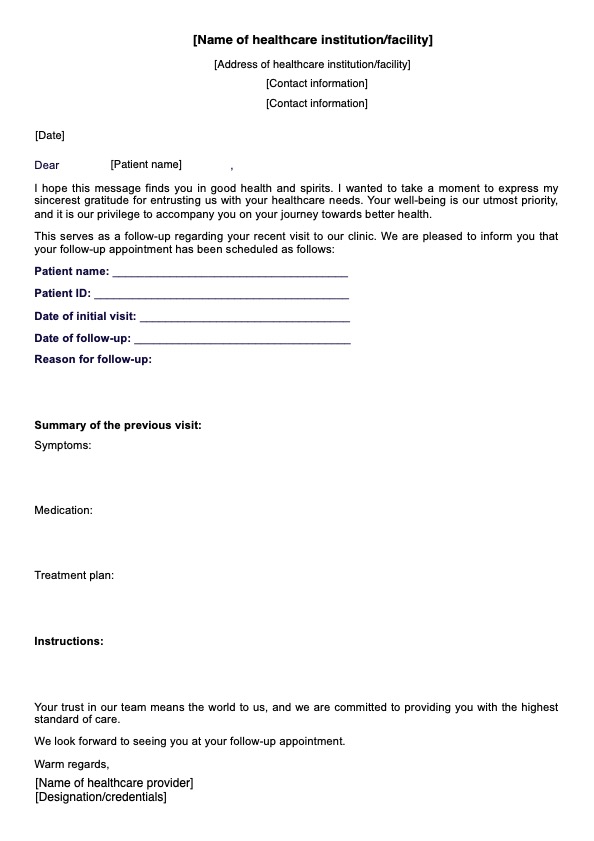A patient follow-up after a recent visit monitors the patient's progress, addresses any concerns or questions, and ensures continuity of care.

Patient Follow Up Template
Streamline provision of care with our Patient Follow Up Template and ensure continuity of care effortlessly.
Use Template
Patient Follow Up Template Template
Commonly asked questions
Patient follow-ups provide an opportunity allowing healthcare providers to clarify any misunderstandings about treatment plans, medication instructions, or next steps discussed during the recent visit.
Yes, patients can use secure email platforms provided by healthcare providers to ask questions, provide feedback, or communicate any changes in their health status, even if they're in good health.
EHR and practice management software
Get started for free
*No credit card required
Free
$0/usd
Unlimited clients
Telehealth
1GB of storage
Client portal text
Automated billing and online payments











